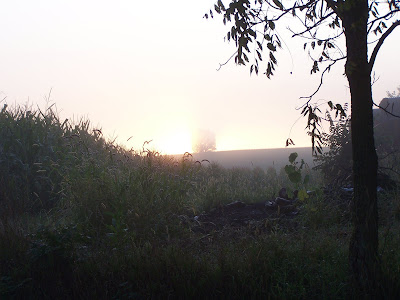When we lived in Arkansas 40 years ago, we visited Mountain View, a small community nestled into the hills of the Ozarks. At that time, it was a sleepy little town, but already know as a center for "mountain music." We attended a fiddle contest--an experience that we both remember vividly. By happen-chance our visit this year coincided with the 2009 Statewide Fiddle Contest, and so it was a little like deja vu. However, things have changed a lot in the last 40 years.
Mountain View is still a little town, but not quite so sleepy. It is the home of the Ozark Folk Center as well as a mecca for all sorts of music--mountain, folk, country, spiritual, bluegrass, etc.
First the Ozark Folk Center.The Ozark Folk Center is a unique state park devoted to preserving Ozark crafts, music, and heritage. Traditional craft demonstrations, live music performances, living histories, apprentice programs and workshops tell the story of this mountain culture. Here we visited broom makers, coopers, knife makers, soap makers, weavers, carvers, etc.
 |  |  | |
 |  |  |
And everywhere was music:

Then there is the music. It is everywhere. Its in the Folk Center. Its in one of seven different nightly shows in the area. It is in the CourtHouse Park--the night we were there, there were seven sessions going on simultaneously. Here is a link to a favorite of ours, Shady Grove, sung by the Patchwork Gals on their album Patchwork Stringband. (Unfortunately, their web site is down and so I cannot provide a link or tell you how to get a hold of this album. Their address is P.O.Box 812, Mountain View, AR, 72560.) At the Brickshy (that is as in "brick shy of a full load") we heard the Leatherwoods. They have a ton of albums, but again, I cannot find a website for them. Here is Angel Band from their Gospel Treasures Album. (Their address is Dancing Doll Music, P.O.Box 64, Mountain View, AR 72560.) And lastly, here is a group that we did not get to see--maybe next time. This is a little traditional tune called Whiskey Before Breakfast from their Harmony Combined Album. (Their address is Harmony, 858 Crooked Ridge Road, Mauntain View, AR 72560.) Here are some pictures of the Leatherwoods.
 |  |
 |  |
 | |

























